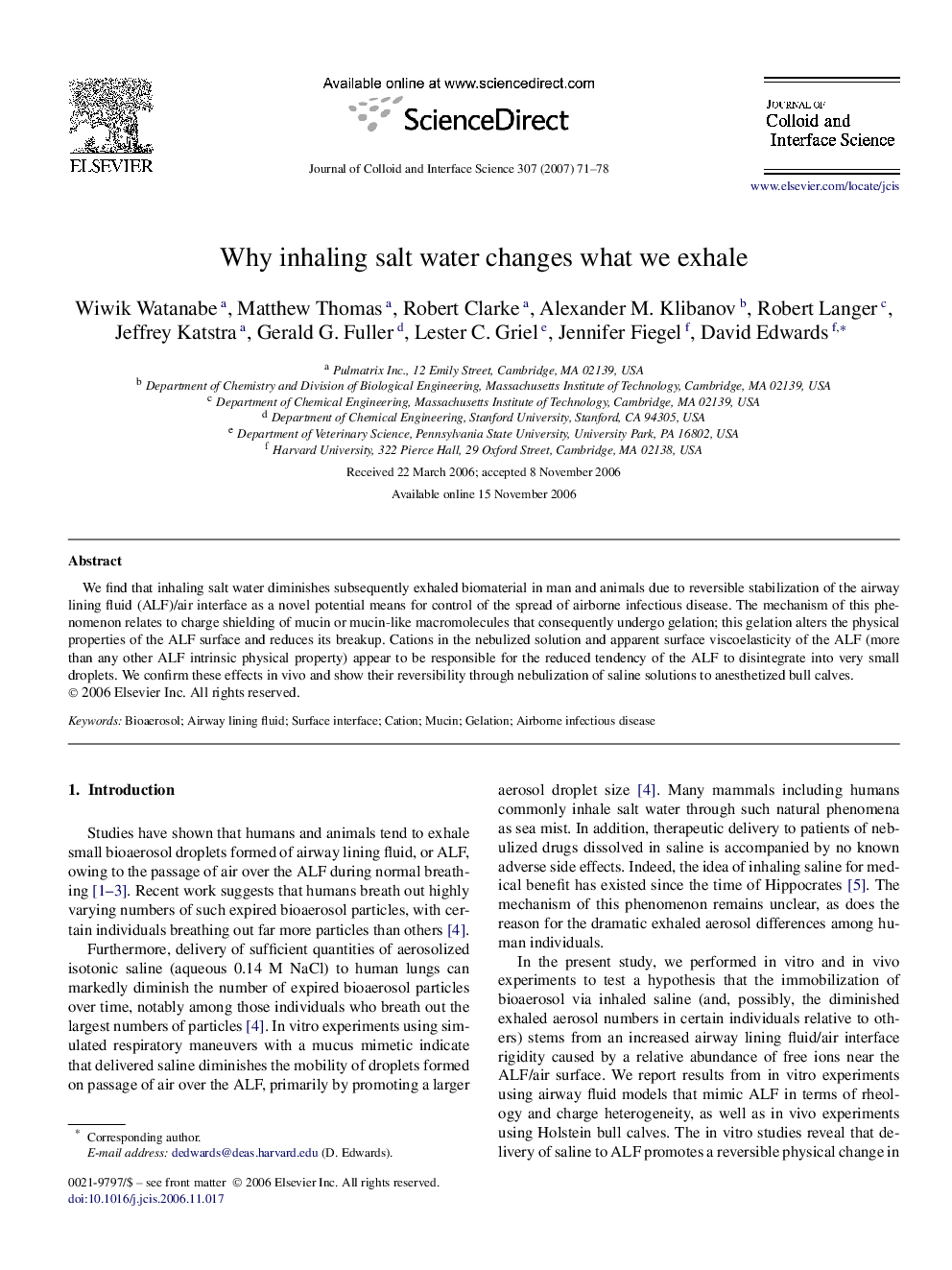| Article ID | Journal | Published Year | Pages | File Type |
|---|---|---|---|---|
| 612516 | Journal of Colloid and Interface Science | 2007 | 8 Pages |
We find that inhaling salt water diminishes subsequently exhaled biomaterial in man and animals due to reversible stabilization of the airway lining fluid (ALF)/air interface as a novel potential means for control of the spread of airborne infectious disease. The mechanism of this phenomenon relates to charge shielding of mucin or mucin-like macromolecules that consequently undergo gelation; this gelation alters the physical properties of the ALF surface and reduces its breakup. Cations in the nebulized solution and apparent surface viscoelasticity of the ALF (more than any other ALF intrinsic physical property) appear to be responsible for the reduced tendency of the ALF to disintegrate into very small droplets. We confirm these effects in vivo and show their reversibility through nebulization of saline solutions to anesthetized bull calves.
Graphical abstractIn vitro and in vivo experiments indicate that the delivery of salt water onto airway lining fluid (ALF) stabilizes the interface through a surface gelation of the mucus. Apparent surface viscoelasticity of the ALF, more than any other intrinsic ALF physical property, appears responsible for the reduced propensity of the ALF to disintegrate into very small droplets.Figure optionsDownload full-size imageDownload as PowerPoint slide
